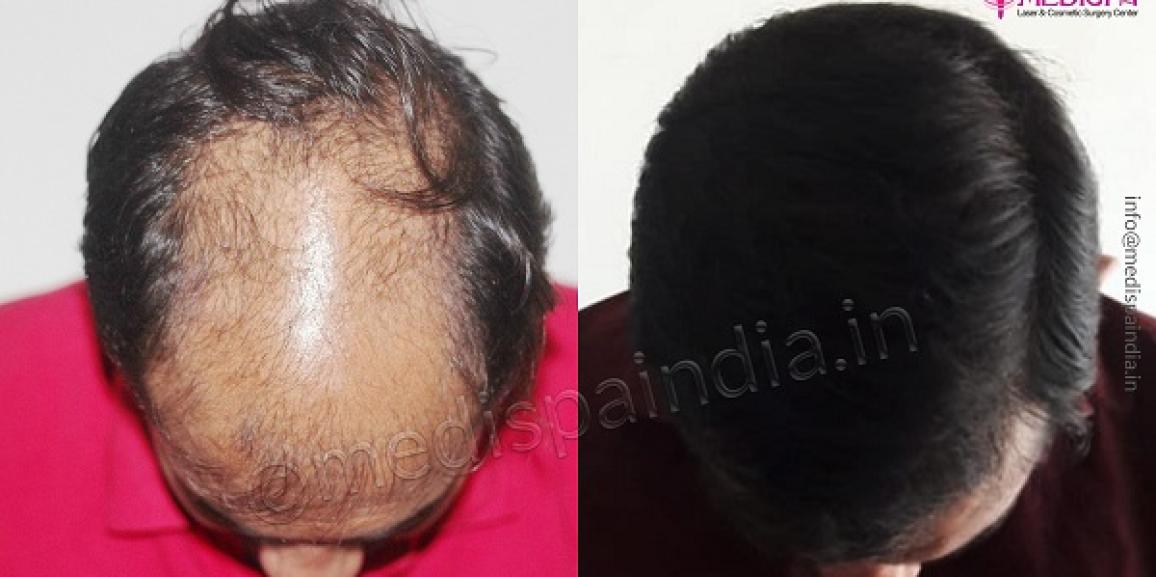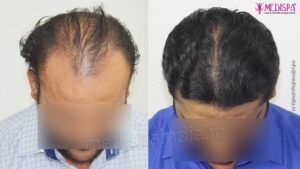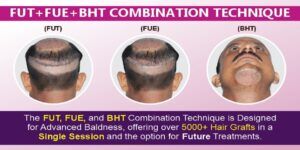
A person’s hair can really improve their appearance and attitude. Whatever you wear, having a healthy scalp improves your appearance and personality. We all want beautiful, thick hair, but those who already have it are fortunate. The prevalence of hair loss is rising in modern society, and there are numerous factors contributing to this.
Pattern baldness
The main factor contributing to hair loss is genetic malfunction. If your parents or grandparents are bald, you should be concerned since your genes could cause you to follow suit. Male pattern baldness or androgenic alopecia are other names for the genetic baldness that affects men.
A person’s hair loss pattern
The frontal region and the vertex of the scalp are affected by pattern baldness, which either begins with a receding hairline or a bald patch at the vertex. These bald spots continue to spread and eventually unite to form a sizable and noticeable bald patch. Due to the activity of androgenic hormones, these hair follicles experience hair loss. These hair follicles are DHT sensitive and experience hair loss as a result of hair thinning or shrinkage.
All of the DHT-sensitive hair follicles are involved in the advanced stage of hair loss, leaving a band of hair on the sides and back of the head. Because they are resistant to the effects of androgenic hormones, these hair follicles are spared. As a result, these hairs are permanent and can be used as a donor area for hair transplants.
Global issue: Hair loss
Worldwide, millions of men and women struggle with the issue of hair loss. Well, losing 50–100 hairs per day is not particularly concerning, but you should be cautious if you notice a flock of hairs on your pillow, in your comb, or in your towel. Therefore, baldness in and of itself can result from:
- Temporary hair loss that is reversible in nature and results from poor nutrition, physical illness, or ongoing medication/treatment. Following resolution of the underlying problem, the hair growth resumes.
- Permanent hair, also referred to as pattern baldness or “androgenetic alopecia,” is when hair loss occurs but no new hair growth takes place. It typically happens in a person’s later years of life and is caused by genetics and variations in hormone levels over time.
The effects of hormones, genetics, and aging cause the hair follicles on the scalp to gradually shrink and thin, eventually ceasing to produce new hair. High levels of androgens, including DHT, can also make it take longer for follicles to grow new hairs once old hairs fall out because hair follicles on the scalp and crown of men’s heads—as opposed to those on the back and sides of the head—are sensitive to DHT. There is no more hair growth once these follicles get too sensitive to DHT with age.
Management options of hair baldness
- Use of cosmetic products like hair oils, shampoo, etc. or alternative therapies like Ayurveda. The claims that these methods or products can help treat hair loss are not supported by a well-established study.
- Wigs/Hair patches/Prosthetic Hair – These are typically used to cover bald spots or the scalp, but they require a lot of upkeep and are not very attractive. Moreover, is easily visible
- Medication – To treat hair loss, two drugs are typically used. (A) Minoxidil. B) Finasteride, a prescription drug for men that is taken orally and comes in pill form. It is a topical medication that is available in liquid, foam, and shampoo forms. Once again, a temporary fix because once the medication is stopped, hair loss returns.
- Hair transplant: Hair transplantation is a surgical procedure in which the underlying idea is to remove hair roots or follicles that are resistant to DHT and, as a result, bear permanent hair for a lifetime and transplant them to the bald area. Therefore, if the surgery is done properly, pattern baldness will be permanently treated. Two straightforward criteria—permanent hair roots and reasonable hair density—are used to choose these roots. The back and sides of the head are frequently selected as the donor area.
How hair transplant can help?
The only way to permanently stop hair loss is through a surgical procedure known as a hair transplant. The procedure, which is essentially a restorative approach to treating baldness, entails harvesting hair follicles from the donor area, storing them until all of the hair follicles have been harvested, and then transplanting them to the desired bald area. Because the surgeon uses hair follicles that are specifically DHT resistant, which are unaffected by androgens and last a lifetime, the procedure provides permanent results. The back and sides of the head, the chest, the axilla, the beard, or the pubic region are the donor areas used to harvest hair follicles.
Numerous ways the hair transplant can benefit you includes:
- Since the transplanted hair would last a lifetime, it would help you stop hair loss permanently.
- If your hair loss at the existing hair progresses, you can do it more than once. But keep in mind to look for a skilled surgeon because a skilled surgeon’s judgment is required to make the multiple sessions feasible.
- It gives you the greatest amount of hair growth possible, subject to the availability of hair follicles in the donor area.
- If the surgeon is talented in the arts, the procedure might produce results that look natural.
One of the top locations for hair transplant in Jaipur is the Medispa clinic, which offers you top-notch care at a hair transplant cost in Jaipur that you can afford. We pledge to give you an amazing and relaxing hair transplant experience. If you’re looking for the best hair transplant center in Jaipur, make an appointment right away at Medispa clinics, where you can have your hair transplantation dreams come true.







